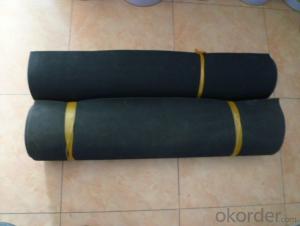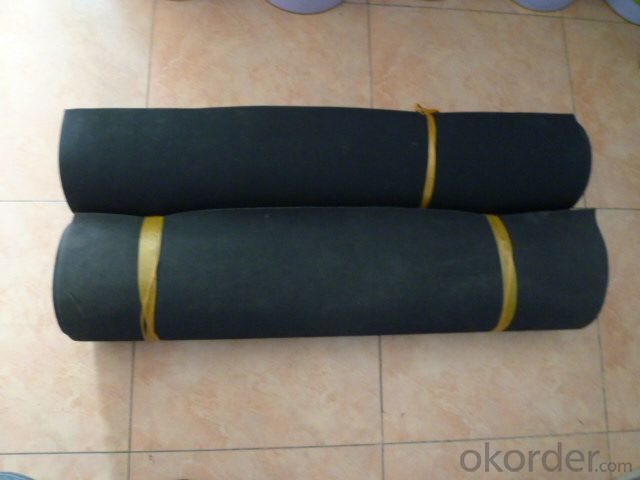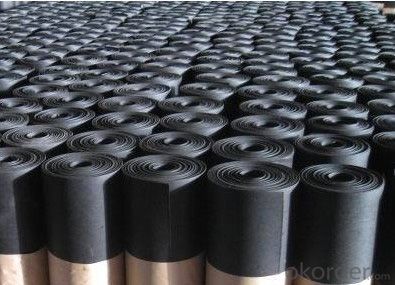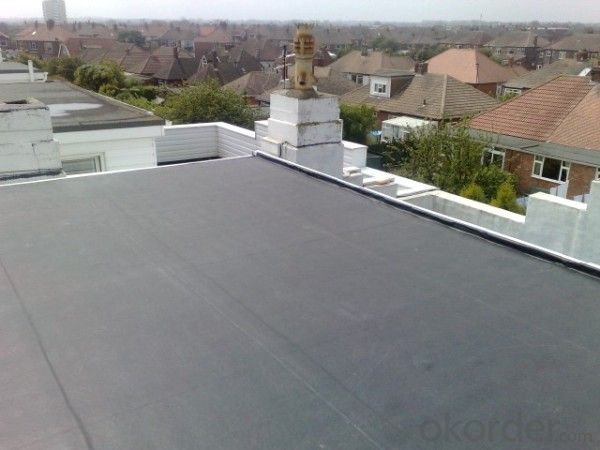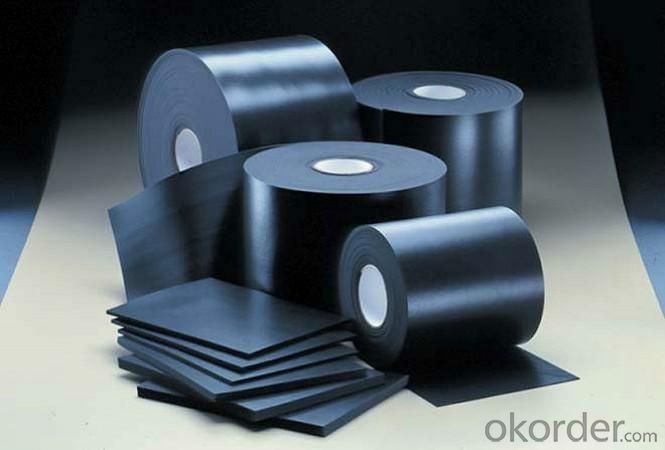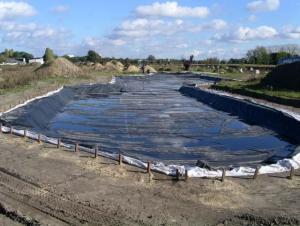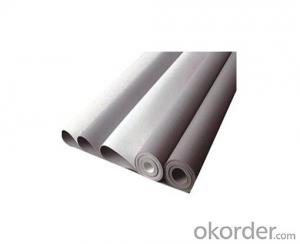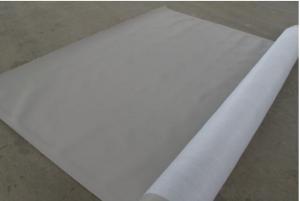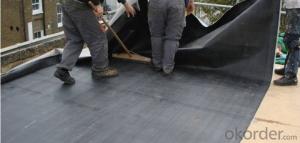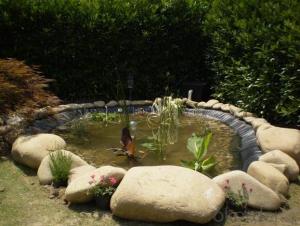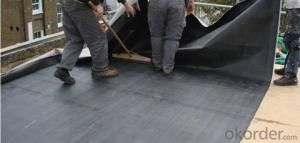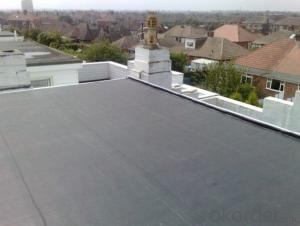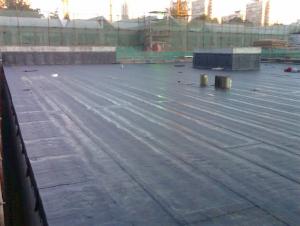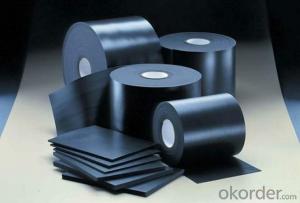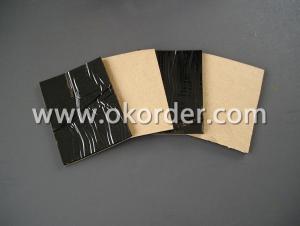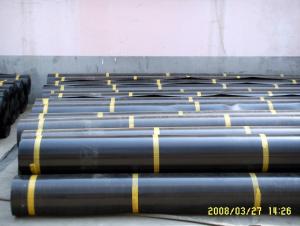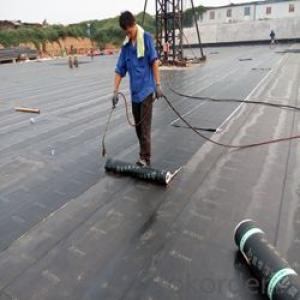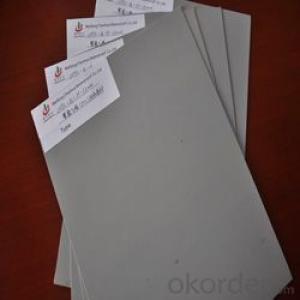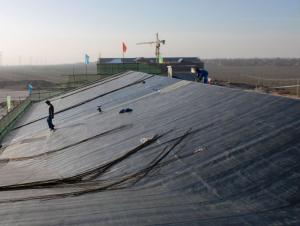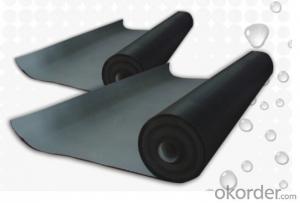EPDM Rubber Coiled Waterproof Membrane for Tall Buildings
- Loading Port:
- Shanghai
- Payment Terms:
- TT OR LC
- Min Order Qty:
- 50000 m²
- Supply Capability:
- 5000000 m²/month
OKorder Service Pledge
OKorder Financial Service
You Might Also Like
EPDM Rubber Coiled Waterproof Membrane for Tall Buildings
Description Of EPDM Rubber Coiled Waterproof Membrane for Tall Buildings:
•EPDM waterproof sheet has excellent anti-ozone-aging performance, able to resist ultraviolet light and corrosion of many chemical corrosive materials in the atmosphere
•It has high tensile strength, high ductility and strong retractility, it has excellent crack resistance, able to effect waterproof function even with tiny vibration of buildings.
• Excellent resistance to ozone, oxidation and sunlight.
• Resistance to chemicals; resistant to most inorganic products.
Main Features of EPDM Rubber Coiled Waterproof Membrane for Tall Buildings:
1>Excellent antiaging performance, service life up to 50 years
2>Working well with in 40C to 100C,it canbe constructed with a single layer in ambient temperature.
3>Waterproofing on various kinds of underground project,industrial of civil buildings and structures.
4>high extension rate, high tensile strength, small size changes at heat treatment
5>Good plant roots penetrability resistance and can be made waterproofing layer of planting roof
6>Special modified molecular structure ,effectively resolving the current domestic and foreign glue joint problem.
7>Good low temperature flexibility, and good performance of adapting to ambient temperature changes.
8>Convenient application ,solid joint, no environment pollution
9>chemical corrosion Resistance, can be used for special occasions
10>Convenient maitenance, low cost.
Specifications of EPDM Rubber Coiled Waterproof Membrane for Tall Buildings:
| Material | EPDM Rubber |
| Size | 1.2m (width)*20m (length) or customized, weldable type 2.05m or 4m width |
| Thick | 1.2mm, 1.5mm, 2.0mm |
| Type | Vulcanized & Weldable |
| Pattern | Non-reinforced (homogeneous) |
| Certificate | ISO9001/14001 |
Applications of EPDM Rubber Coiled Waterproof Membrane for Tall Buildings:
Widely used in roofs, basement, toilet ,swimming pool, and all kinds of industry and civil building waterproofing, reservoir, vivicism, bridge, underground, tunnel and dam waterproofing ,especially to the keystone waterproofing projects which is durability, high corrosion resistance and easy deformation.
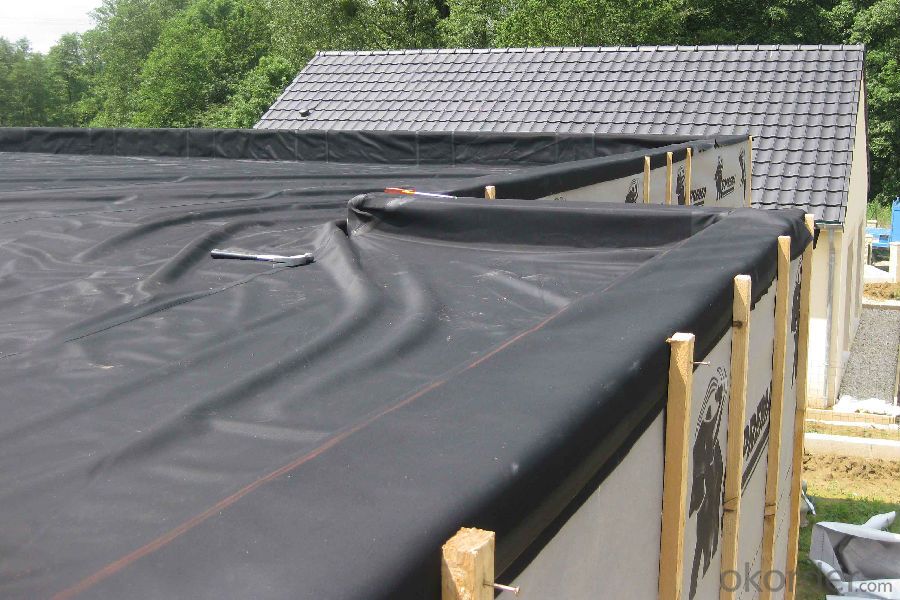
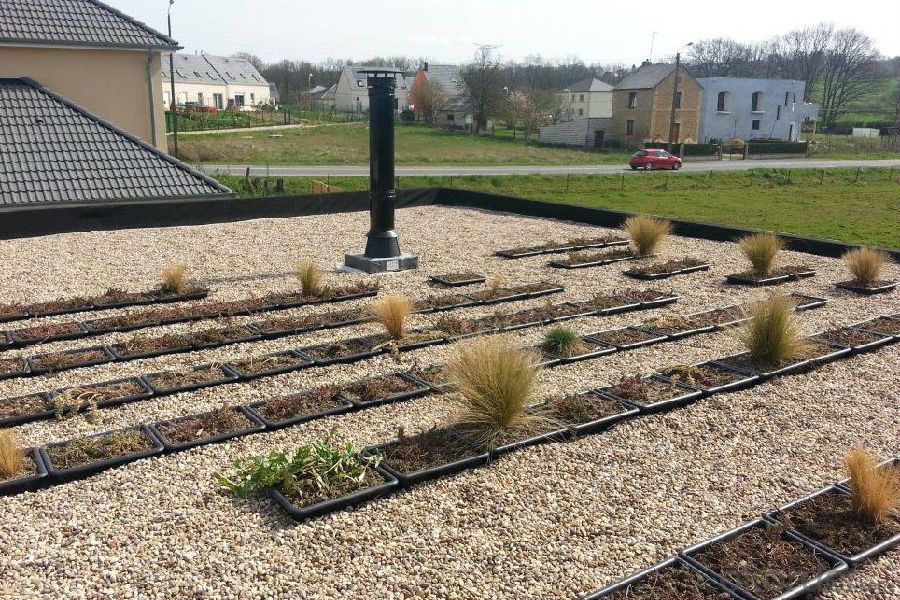
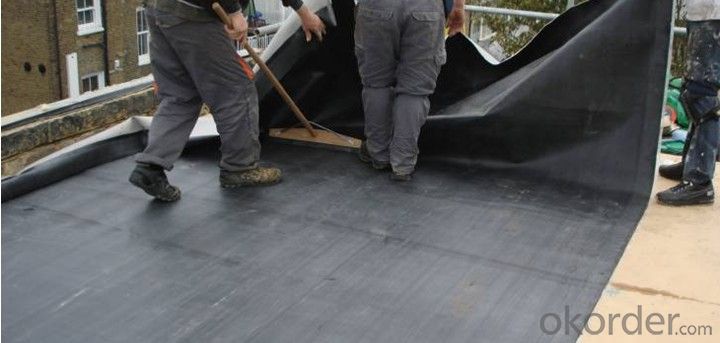
IMages of EPDM Rubber Coiled Waterproof Membrane for Tall Buildings:

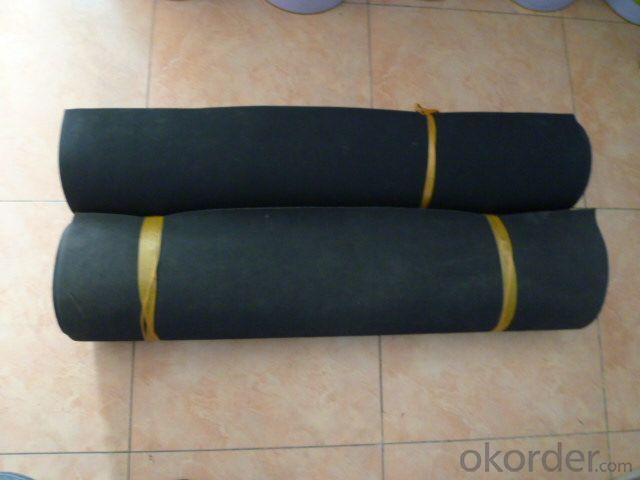
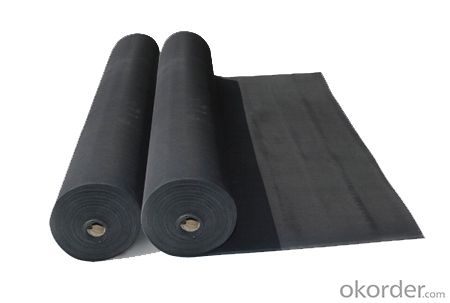
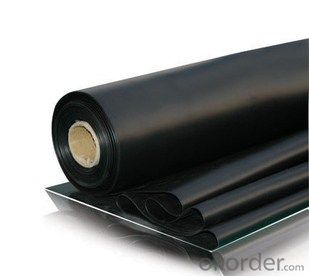
FAQ of EPDM Rubber Coiled Waterproof Membrane for Tall Buildings:
1. What are we supplying?
We are specialized in producing Colorful Asphalt Roof Shingle, SBS/APP modified bitumen waterproof membrane, Self adhesive bitumen waterproof membrane, PVC waterproofing membrane, EPDM rubber roofing membrane, Single Component Polyurethane Waterproof Coating, and Spray Polyurea Waterproof Coating
.
2. How Many years experience do we have?
We have been exported to more than 20 countries in the past 15 years.
3. How long do we usually reply your request?
We always reply our customer within 24 hours.
- Q: What is sbs, app modified asphalt waterproofing membrane
- Their characteristics and differences: First, SBS modified asphalt waterproofing membrane (polyester tires): SBS modified asphalt waterproofing membrane is SBS rubber modified petroleum asphalt cited as the invasion coating, polyester fiber non-woven , Jute cloth, glass fiber mats were made for the fetal base, the plastic film for the anti-sticking isolation layer, the selection, ingredients, eutectic, invasion, composite molding, curling and other processes processing production. Such as building dragon TJ-242 SBS elastomer modified asphalt waterproofing membrane. Features: The use of polyester felt (filament polyester non-woven) mechanical properties, water resistance, corrosion resistance is also very good; elastic and low temperature performance has improved significantly, the effective range of (-25 ~ 100) ℃; Excellent fatigue resistance. Use: for high-level and high-rise buildings of the roof of the single-layer laying and composite use, can also be used for basement and other waterproof and moisture, more suitable for the northern cold areas and structural flexibility of the building waterproof.
- Q: Can a waterproofing membrane be used on tunnels with pedestrian traffic?
- Yes, a waterproofing membrane can be used on tunnels with pedestrian traffic. Waterproofing membranes are commonly used in underground structures, including tunnels, to prevent water infiltration and protect the structure from water damage. These membranes are typically applied to the exterior walls and floors of the tunnel to create a barrier against water penetration. They are designed to withstand the traffic load and provide long-term protection against moisture. Additionally, some waterproofing membranes have anti-slip properties to ensure the safety of pedestrians walking through the tunnel. Overall, using a waterproofing membrane on tunnels with pedestrian traffic is an effective method to enhance the durability and safety of the structure.
- Q: How does a waterproofing membrane handle hydrostatic pressure?
- Hydrostatic pressure is managed by a waterproofing membrane, which acts as a barrier between water and the structure it is applied to. When faced with hydrostatic pressure, the membrane creates a seamless seal that stops water from entering the structure. The membrane is constructed to be impermeable, meaning it does not allow water molecules to pass through. Typically made from rubber, PVC, or bitumen, these materials have excellent resistance to water penetration. They are also flexible, enabling the membrane to conform to the surface it is applied to and create a secure seal. When the membrane experiences hydrostatic pressure, it withstands the force and prevents water from infiltrating the structure. The membrane's ability to resist water pressure depends on its thickness, strength, and installation quality. Thicker membranes offer greater resistance to hydrostatic pressure, while a well-installed membrane without gaps or overlaps enhances its effectiveness in managing water pressure. In addition to acting as a barrier against water penetration, some waterproofing membranes are designed to accommodate movement caused by hydrostatic pressure. They can stretch or elongate to accommodate the structure's expansion and contraction, which occurs due to varying water levels or external forces. This flexibility helps the membrane maintain its integrity and prevent water from seeping through. Overall, a waterproofing membrane effectively handles hydrostatic pressure by providing a continuous, impermeable barrier that resists the force of standing or moving water and prevents it from infiltrating the structure. Its ability to withstand water pressure depends on its thickness, strength, installation quality, and flexibility to accommodate movement.
- Q: Can waterproofing membranes be used on underground tunnels?
- Underground tunnels can indeed utilize waterproofing membranes. These specialized membranes are crafted to create a barrier against water infiltration and are widely employed in various construction contexts, including subterranean structures like tunnels. Typically composed of materials such as bitumen, asphalt, or synthetic rubber, these membranes possess exceptional waterproofing capabilities. Once applied to the walls and floors of a tunnel, waterproofing membranes establish a protective layer that hinders water from permeating into the tunnel. This becomes particularly crucial in underground tunnels, as they are vulnerable to water intrusion from the surrounding soil or groundwater. By implementing waterproofing membranes, the integrity and longevity of the tunnel structure are preserved, minimizing the risk of water damage, corrosion, and deterioration. Moreover, waterproofing membranes yield additional advantages, such as resistance against chemical attacks, prevention of mold and mildew growth, and enhancement of overall tunnel insulation. These membranes can be employed either during the construction phase of the tunnel or as a retrofit solution for existing tunnels. It is essential to note that the choice of the appropriate waterproofing membrane should be based on factors such as the tunnel type, anticipated water pressure, and overall design requirements. Seeking guidance from a professional engineer or waterproofing specialist is highly recommended to ensure the selection and installation of the most suitable waterproofing membrane for underground tunnels.
- Q: Can a waterproofing membrane be used on tunnels with security systems?
- Yes, a waterproofing membrane can be used on tunnels with security systems. The waterproofing membrane is designed to protect the tunnel structure from water infiltration and damage, and it can be installed without interfering with the security systems in place.
- Q: Can a waterproofing membrane be used in areas with high groundwater levels?
- Yes, a waterproofing membrane can be used in areas with high groundwater levels. Waterproofing membranes are designed to prevent the penetration of water and can be effective in areas where groundwater levels are high. However, it is important to ensure that the membrane is properly installed and meets the specific requirements of the site conditions to ensure optimal performance.
- Q: Is a waterproofing membrane resistant to UV radiation?
- Typically, a waterproofing membrane is resistant to UV radiation. Most manufacturers design these membranes to be durable and long-lasting, ensuring they can withstand exposure to UV rays. Over time, UV radiation from the sun can cause degradation and damage to various materials, including waterproofing membranes. To combat this, manufacturers often include UV stabilizers and additives in the membrane's composition. These additives prevent the breakdown of the membrane's structure, allowing it to remain effective in preventing water infiltration and maintaining its performance for an extended period, even when exposed to direct sunlight. Some waterproofing membranes may also have a protective layer or coating that offers extra UV resistance. To understand the specific UV resistance capabilities of a particular waterproofing membrane, it is advisable to consult the manufacturer's specifications and guidelines.
- Q: Can a waterproofing membrane be used for elevator pits?
- One can utilize a waterproofing membrane for elevator pits. Elevator pits, typically situated at the lowest level of a building, are susceptible to water infiltration, particularly in regions with high groundwater levels or heavy precipitation. By implementing a waterproofing membrane in the elevator pit, the ingress of water can be prevented, thereby averting harm to the elevator machinery and preserving the pit's structural integrity. Waterproofing membranes are engineered to establish a barrier against water penetration and can be employed on both the walls and floor of the elevator pit to ensure optimal protection. It is imperative to select a top-notch waterproofing membrane that is specifically intended for below-grade applications and can endure continual exposure to moisture. Moreover, the proper installation by skilled professionals is vital to guarantee the efficiency and longevity of the waterproofing system.
- Q: Are waterproofing membranes effective in preventing water damage?
- Waterproofing membranes prove highly efficient in the prevention of water damage. Crafted with the intention of creating a barrier that hinders the infiltration of water and the penetration of moisture into surfaces like roofs, basements, and foundations, these membranes significantly reduce the risk of water damage arising from leaks, seepage, or condensation. Typically composed of durable materials such as rubber, PVC, or bitumen, waterproofing membranes possess a high resistance to water and moisture. Various application methods, including spraying, rolling, or adhering with a special adhesive, ensure these membranes secure surfaces with a seamless and watertight seal, effectively blocking the seepage of water. Furthermore, waterproofing membranes offer additional advantages beyond their water damage prevention capabilities. They contribute to enhanced energy efficiency by reducing heat loss or gain and safeguard against the growth of mold and mildew. Moreover, these membranes extend the lifespan of protected surfaces by countering water-related deterioration, such as corrosion or rot. It is crucial to acknowledge that the efficacy of waterproofing membranes relies on proper installation and regular maintenance. Any flaws or damage in the membrane can compromise its ability to prevent water damage. Therefore, engaging professional contractors experienced in waterproofing is essential to guarantee correct application and regular inspection for signs of wear or damage. Overall, waterproofing membranes represent a dependable and efficient solution for averting water damage. They offer a long-lasting and sturdy defense against water infiltration, preserving the structural integrity of buildings and avoiding costly repairs stemming from water-related issues.
- Q: Can a waterproofing membrane be used for water treatment plants?
- Yes, a waterproofing membrane can be used for water treatment plants. Waterproofing membranes are designed to prevent the passage of water and can be used to provide a barrier against water leakage in various structures, including water treatment plants. These membranes can be applied to different areas of the plant, such as tanks, reservoirs, pipes, and basements, to prevent water infiltration and protect the infrastructure from potential damage. Additionally, waterproofing membranes can help maintain the integrity of the water treatment process by ensuring that water remains contained within designated areas and does not seep into surrounding soil or structures.
Send your message to us
EPDM Rubber Coiled Waterproof Membrane for Tall Buildings
- Loading Port:
- Shanghai
- Payment Terms:
- TT OR LC
- Min Order Qty:
- 50000 m²
- Supply Capability:
- 5000000 m²/month
OKorder Service Pledge
OKorder Financial Service
Similar products
Hot products
Hot Searches
Related keywords
